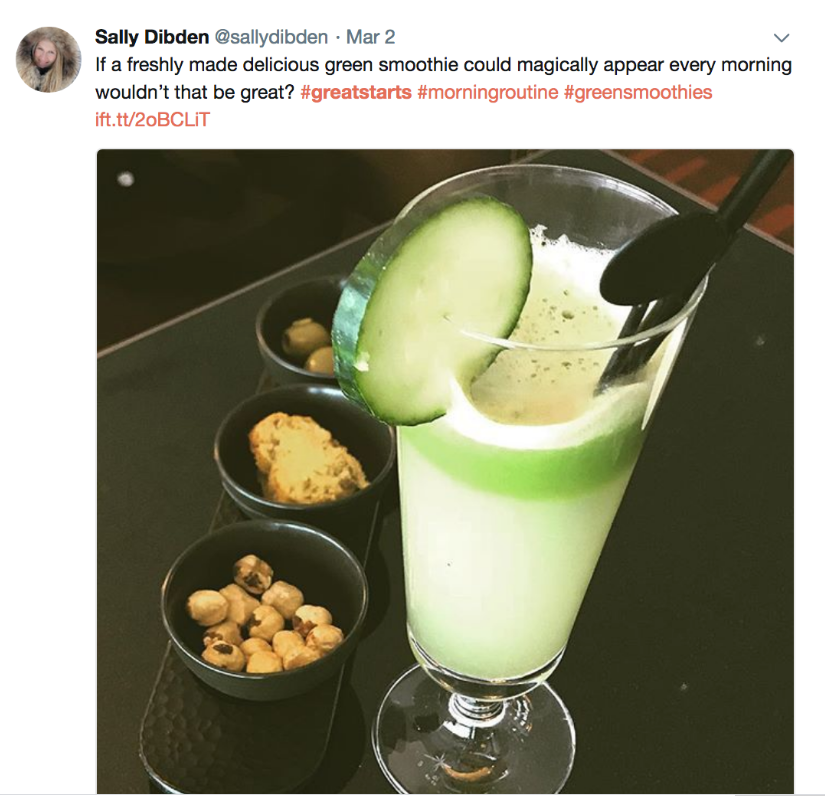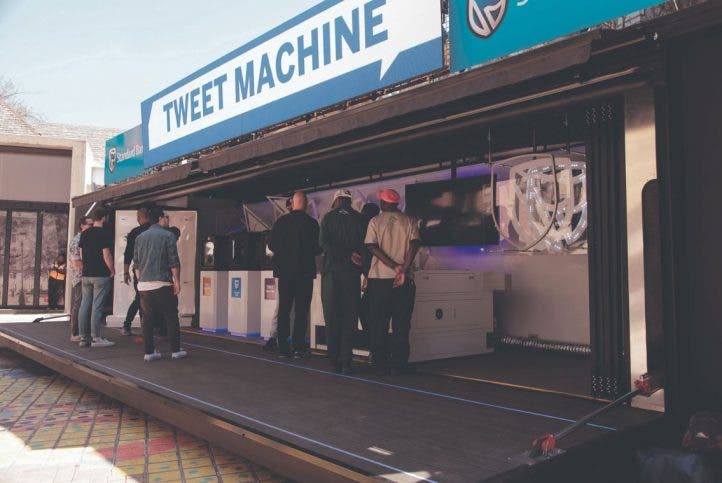People have been using hashtags for quite some time. Not only are they
the best way for users to find topics that pique their interest on social media, but they also help brands to segment their audiences and target specific individuals in their campaigns through the use of these #tags.
For example, if your brand is an advertising agency trying to target audiences who are interested in your services, you would find a relevant hashtag that these audiences are following and use it in your campaigns.
All things considered, you most likely already have a good idea as to what a #tag is used for.
But what’s a
hashtag campaign?
Well, according to Andie Katschthaler, blogger at WALLS.IO, “
A hashtag campaign is a marketing initiative usually meant to gain social media attention, to create engagement, or drive traffic for a specific topic, product or idea”.
You might be thinking that it sounds similar to a social media campaign, but there
is a difference. Hashtag campaigns involve a #tag being created or used for the sole purpose of marketing a particular product, idea or service. A social media initiative is promoted on social platforms but that doesn't necessarily have a specific hashtag pertaining to or surrounding the campaign.
Basically, all hashtag campaigns are considered to be social media campaigns (as the aim is to get people on social to use the #tag to drive engagement), but not
all social campaigns are #tag campaigns.
With that said, here are the do's and don’ts you need to follow:
DO create a #tag that resonates with your audience
Think back to the ever-famous ‘#RightMyName’ campaign. For those who live under a rock (or on a different national rock), this was a South African initiative brought out by fast-food restaurant Nando’s. The aim of the campaign to get rid of that red underline on spell checkers, highlighting that certain names are ‘wrong’.
“
#RightMyName' [aimed] to encourage South Africans to go online and register their names on the [campaign] website. The aim of the website [was] to promise that on 21 March 2018 — Human Rights Day — South Africans [would] 'be able to update their spellcheck dictionary and get rid of the red line beneath their name – and the names of all their friends and family too.” This is according to a press release published by
media update.
Needless to say, the campaign spiked on social platforms like Twitter.
The whole reason why this initiative did so well is that the brand kept its local audience in mind: South Africans have long been debating the spelling and mispronunciation of people’s names, with various hashtags such as ‘
#TheYearWeMisprounounceBack’ trending in 2016.
 Image sourced from Business Insider
Image sourced from Business Insider
This led to Nando’s launching an online platform on its site where people could correct the spelling of their own names in 2018.
Notice how the brand had its audience in mind when producing the campaign? This is definitely something social media marketers can learn from! Nando’s knew that there was a stigma about locals not being able to spell or pronounce South African names correctly, even though the names have been around for years. It then used this as a means of solving this problem, while at the same time promoting its brand.
DON’T forget to do your research
Choosing the appropriate hashtags to use for your campaign doesn’t come easy, and you’ll definitely need to do some research. Because there are such a variety of #tags being used already, you need to ensure that yours stands out and that it’s not being used by someone else.
In order to do this, you would have to search for it on social media platforms like Twitter, Instagram and Facebook. Once you have done your research, and you’ve ensured that the #tag does not exist as of yet, it’s time to put on your thinking cap and come up with a unique hashtag!
Here are three tips on how to do this:
- Define your goals: What is the aim of your #tag? Do you want to drive leads? Garner traffic? Send out a message? You need to be able to answer these questions before you create your hashtag.
- Be creative: Do your best to create something that is unique to your own brand. Don’t make a hashtag that is similar to something trendy or popular just because people like it. Your consumers love your brand so make sure that your hashtag is relevant to what you do and conveys the correct tone.
- Keep it simple: Try not to over complicate your #tag by adding things like acronyms or too many phrases. You want your hashtag to catch on and to trend, plus you don’t want to make your #tag too long.
A great example of a unique hashtag campaign by Kellogs is #greatstarts. This #tag combines the ethos of what Kellogs does (provide a healthy breakfast to start your day, hence, ‘great starts’). The brand also did its research, as this was
carefully launched just before the Rio Olympics in 2016, which is why it gained so much traction on social media (
athletes need to eat healthily too).
 Image sourced from Jose Angelo Studios
Image sourced from Jose Angelo Studios
DO make it emotive
Today’s consumers are all about
feeling something when they engage with your products or services. That’s why it’s important to ensure that your hashtag campaign actually has some emotion and meaning behind it and that you’re not just creating a campaign for engagement purposes. Whether the purpose is to make your consumers laugh, cry, feel good, angry … just know that it’s the feeling that drives the message home!
Take Standard Bank’s #GoodFollowsGood for example. The bank created a campaign that aimed to invoke change within users on Twitter. The entire premise of the hashtag initiative was that each time a user used #GoodFollowsGood in a post,
an instruction would be sent to the ‘Tweet Machine’, which utilises 3D printing and laser cutting to create maths equipment for children in need.
The feeling of wanting to be a part of change and do a good deed encouraged users to promote the campaign on Twitter, which is why it was such a huge success.
 Image sourced from The Citizen
Image sourced from The Citizen
DON’T make your hashtag too long
It’s important to remember not to make your hashtag too long or overly complicated. #tags are meant to be concise, quick to read and shareable. However, with that said, do not compromise your campaign by shortening it so that it’s more ‘snackable’ or by turning it into an acronym.
No one will understand what your campaign is about if it’s just capitals — #TWDFQDR … What does
that mean? No one knows!
You
want users to understand it so that they can get curious about the campaign, click and engage and be eager to learn more!
amaSocial tip:
Try to keep your hashtag between 10 and 20 characters, but only resort to longer hashtags if there is no other way around.
DO ensure that your #tag creates a hype
Your hashtag campaign is important to you, and you want it to be important to everyone else too! That’s why you need to get excited about it and create a big ‘hoopla’ so that users feel the same way. The more psyched people are about your initiative, the more it will be engaged with by audiences.
So, how do you stir up the heat and get people pumped? Well, the most important thing to remember is that your #tag needs to be interesting. Whether it’s the messaging behind the campaign itself, or what the initiative entails (
perhaps it’s an exciting competition … who doesn’t love prizes?), it needs to evoke something in order for people to want to interact with it. And, of course, your brand or initiative needs to be sending out some sort of message.
Take the 2020 #EggChallenge that was trending this year during lockdown for example. The challenge required users on social media to subject themselves to drinking a raw egg (sometimes with alcohol) and then eating sugar. Our sentiments on that?
Well ...
Despite the
weirdness of this challenge, it kept the world entertained for a while, as no one had anywhere to go or be. Most importantly, because it occurred during a time where everyone was bored at home, it definitely created a hype! It’s all about the timing.
DON’T use more than one campaign hashtag
Be careful not to fall into the trap of using more than one hashtag in the campaign, as that can confuse people. Users on social media are bound to use your brand’s #tag along with others associated with your campaign but don’t be tempted to include one of the trending hashtags as an addition to your brand’s just to reel in the numbers.
People will easily see right through it, and you don’t want to get involved with a particular topic without knowing what it’s about or if it doesn’t pertain to your campaign or brand (see the ‘don’t’ on doing research).
A good example of this is the #BlackoutTuesday campaign that was trending earlier in June. Brands were eagerly showing their support; however, some of them were including the #BlackLivesMatter hashtag, which caused some
backlash from users on social media and in the news.
Although this initiative is important, don’t get your brand involved just to get engagement. If you are going to include a hashtag that’s about a particular cause, ensure that your brand is actively doing something to help and that it forms part of your initiative. Don’t be
that guy.
DO promote your #tag across multiple the platforms
You want your #tag campaign to be seen by all your audiences, right? Right! That’s why you need to launch your initiative across multiple platforms, not
just social media. Although the end goal of a hashtag campaign is for it to be seen and marketed on social, the only way more people will be aware of it is if they see it
everywhere.
Whether it’s in the news, used in your press releases or on social media — people are bound to talk. You can even include your hashtag in your own ads to promote more sales. The point is, your #tag needs to be seen all over, and once a hashtag is seen, it’s bound to generate curiosity — the result? People will use the #tag and share it on their social platforms.
For more information, visit
www.amasocial.co.za. You can also follow amaSocial on
Facebook,
Twitter,
Instagram or
LinkedIn.
*Image has been altered and is courtesy of Marco Verch under this license